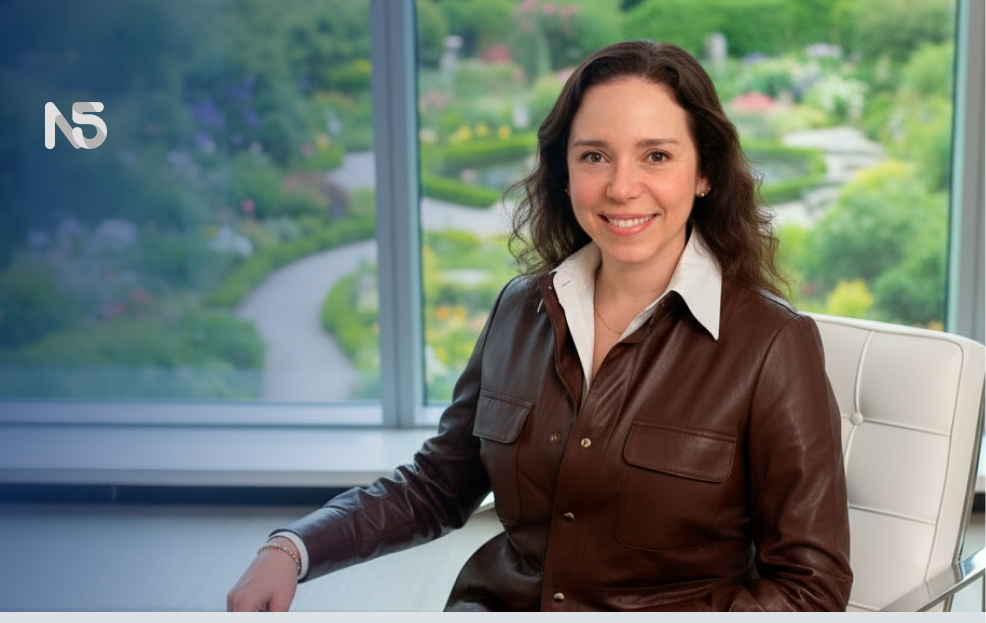All Calls, remote leadership, and “social oxygen”:
The perspective of Yanina Bustos, CHRO of N5 Now, on how to sustain organizational culture and digital well-being across distributed teams.
In a context where remote work has shifted from being an exception to becoming a core strategy, Yanina Bustos, Chief Human Resources Officer (CHRO) at N5, shares her view on why All Calls are far more than operational meetings.
According to her, they are cultural rituals that strengthen belonging, enable transparent conversations, and support the well-being of teams spread across multiple geographies.

1. Culture and Connection
In teams that no longer share a physical space, how can we preserve—or even strengthen—the sense of belonging? What role do collective spaces like All Calls play in that effort?
In organizational cultures where remote work is part of the strategic definition, these kinds of initiatives are key tools to ensure business continuity and team cohesion.
They also encourage collaboration across teams, promote human connection, and create competitive advantages by attracting and engaging talent distributed across different regions.
2. Leadership and Transparency
Many All Calls end up becoming leadership monologues. From your experience, how can a leader turn that moment into a genuine space for dialogue and trust?
In a dynamic and distributed context, remote leadership requires a conscious adaptation from traditional management styles.
The transformation of the work model doesn’t just happen by training teams on digital tools—it happens by developing a new “way of leading.”
In my experience, the real challenge lies in leaders becoming aware of the new capabilities needed to manage teams in remote environments.
Leadership competencies in this modality take on a different strategic dimension, demanding empathy, flexibility, and the ability to adapt to various collaborator styles and cultures.
A remote environment is not just “an office at a distance”; it’s a model designed for collaborative excellence, agility, and innovation—where teams feel connected, autonomous, and aligned with strategic goals and shared purpose.
These spaces evolve as leadership intentionally creates moments where clear, proactive communication coexists with active listening and continuous feedback.
Empowering teams by making their results visible provides recognition and inspiration—while also safeguarding digital well-being in safe and trusting spaces.
3. Rituals and Well-being
Why is it important to understand All Calls not only as operational meetings but as cultural rituals that influence motivation and organizational well-being?
In remote environments, informal interactions—casual chats, hallway encounters, shared laughter—almost completely disappear.
There’s no such thing as a “digital hallway.”
So, when a virtual meeting is designed as a ritual—with purpose, consistency, and space for the human dimension beyond the operational—it helps restore those cultural elements of belonging.
Research shows that social communication during virtual meetings improves employee engagement and team cohesion.
In essence, these “capsules,” conceived from the start as social oxygen, foster a sense of connection and psychological well-being, boost structured motivation, and provide continuity and stability amid change—preventing technology from becoming a barrier or meetings from feeling empty.
Ultimately, Yanina Bustos’ perspective invites us to rethink All Calls as more than just a checkbox on the agenda: they are spaces of cultural design.
When planned with purpose, consistency, and a human-centered focus, these virtual encounters become true generators of trust, alignment, and psychological safety.
In a distributed and constantly evolving work world, the challenge for organizations—and their leaders—is no longer just mastering technology, but using it to create social oxygen: moments where clear communication coexists with active listening, recognition, and care for relationships.
That’s precisely where organizational culture stops being a statement and becomes a lived experience for every member of the team.
By Yanina Bustos, Chief Human Resources Officer (CHRO) at N5 Now.

